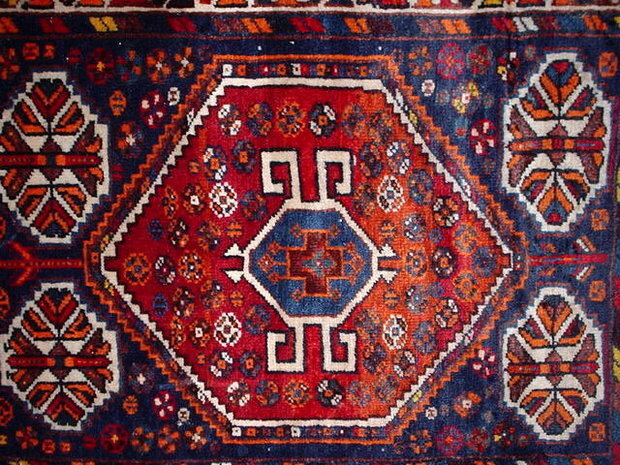Experts discuss metaphysical symbols of so-called Arab-Jinn carpets

TEHRAN—On Wednesday, a panel of cultural heritage experts discussed metaphysical symbols of what they called “Arab-Jinn carpets” once being woven in Iran’s southern Fars province.
Organized by the Tehran-based Research Institute of Cultural Heritage and Tourism, addressed the relationship between pre-Islamic metaphysical symbols and the prophets of Semitic religions in Arab-Jinn carpets as well.
As mentioned by one of the experts, those carpets have metaphysical motifs, which are now rarely woven due to the weavers’ fear of “Jinn”. Some motifs are common in blue background carpets (different tones of blue) and white backgrounds, but they are very different in the role of the main motifs, they said.
Moreover, the experts analyze symbols of prophets in those carpets with the help of literary merits of Zoroastrian and Semitic religions, along with the beliefs of the Iranian people, Mehr reported.
The number of this type of carpet is reportedly very rare and only the images of five examples that bear white backgrounds and two other ones with a blue background (dark and light) have appeared in different books and publications.
There is no carpet of this type available even in the National Carpet Museum of Iran and other Iranian museums, the experts said. “The birthplace of the Arab-Jinn carpets that bear special motifs was in Fars province.”
Persian carpets are sought after internationally, with the medallion pattern being arguably the most characteristic feature of them all. Weavers spend several months in front of a loom, stringing and knotting thousands of threads. Some practice established patterns. Some make their own.
Each Persian carpet is a scene that seems ageless, a procedure that can take as long as a year. These efforts have long put Iran’s carpets among the most complex and labor-intensive handicrafts in the world. When the weaving is finally done, the carpet is cut, washed, and put out in the sun to dry.
Throughout history, invaders, politicians, and even enemies have left their impact on Iran’s carpets. As mentioned by the Britannica Encyclopedia, little is known about Persian carpet-making before the 15th century, when art was already approaching a peak.
For instance, the Mongol invasion of the 13th century depressed Persia’s artistic life, only partially restored by the renaissance under the Mongol Il-Khan dynasty (1256–1353). Although the conquests of Timur (who died in 1405) were in most respects disastrous to Persia, he favored artisans and spared them to work on his great palaces in Samarkand.
Later in the 17th century, there was a growing demand for the production of many gold and silver-threaded carpets that were ultimately exported to Europe. Some were made in Kashan, but many of the finest came from Isfahan. With their high-keyed fresh colors and opulence, they have affinities with European Renaissance and Baroque idioms.
At the beginning of the 18th century, nomads and town dwellers were still making carpets using dyes developed over centuries, each group maintaining an authentic tradition. Not made for an impatient Western market, these humbler rugs of the “low school” are frequently beautifully designed and are of good material and technique.
AFM
Leave a Comment